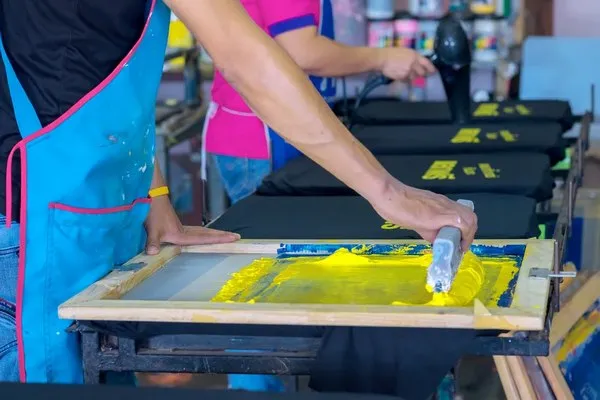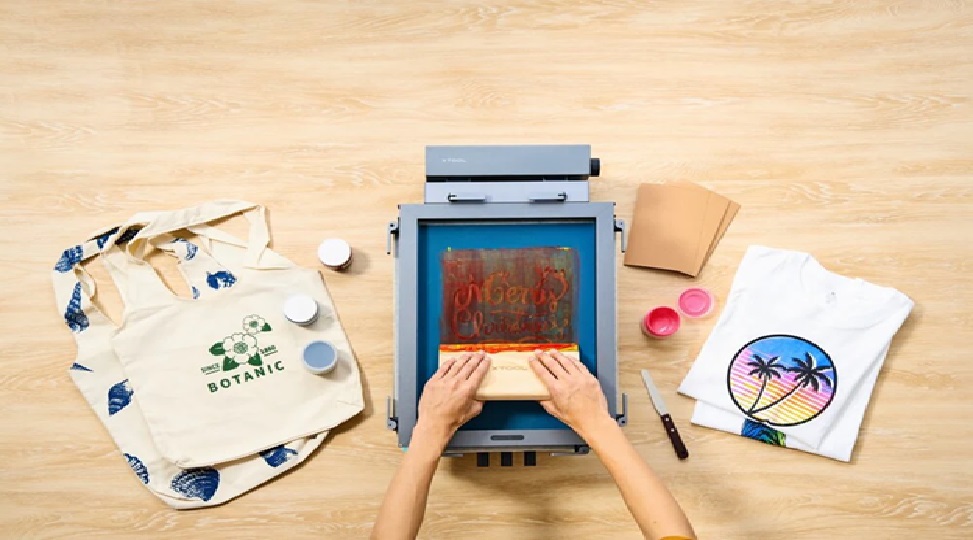Screen printing services are a popular and versatile method for transferring designs onto various surfaces like fabric, paper, and even wood.. Known for its vibrant colors and durability, screen printing is widely used to create everything from custom t-shirts and posters to promotional materials and artwork. Whether you’re new to the process or looking to refine your technique, this guide will introduce you to the basics of screen printing, its benefits, and its many creative applications.
What is Screen Printing?
Screen printing, also referred to as silkscreen printing, is a method where ink is pushed through a mesh screen onto a surface. Each part of the design that will appear on the material has its own screen, so if you are printing a design with multiple colors, each color will require a separate screen. This process is used both by artists for unique, hand-crafted prints and by businesses for large production runs, making it an ideal option for a wide variety of projects.
The Screen Printing Process
The screen printing process involves several steps, each crucial to achieving high-quality, vibrant prints. Here’s an overview of the steps involved:
1. Design Preparation
The first step is creating or selecting a design. If your design has multiple colors, you’ll need to separate the design into layers, each corresponding to one color. Digital software like Adobe Illustrator or Photoshop can help with this process.
2. Stencil Creation
To make a stencil, you need a screen coated with a special light-sensitive emulsion. Once the emulsion is dry, you place your design on the screen and expose it to UV light. The light hardens the emulsion, but the areas where the design is present remain soft, allowing you to wash them away, leaving behind your design as a stencil on the screen.
3. Setup
Once your stencil is ready, the next step is to set up the screen on the material you will be printing on (called the substrate). This can be anything from fabric to paper, glass, or wood. You’ll need to carefully align the screen to ensure your design is printed in the correct place.
4. Printing
Using a tool called a squeegee, you push ink through the screen onto the material. You’ll repeat this process for each color layer in your design. For each color, you’ll need a new screen and stencil. The more colors in your design, the more screens and steps will be required.
5. Curing
After printing, the ink needs to be dried so that it adheres to the material permanently. Depending on the type of ink used, this can be done using a heat press, a conveyor dryer, or even air drying. Curing is an important step to ensure the design lasts, especially on fabrics that may be washed or exposed to the outdoors.
Benefits of Screen Printing
Screen printing offers many advantages, making it one of the most popular methods for creating designs. Here are some of the key benefits:
1. Vibrant Colors
The ink used in screen printing is thicker than many other printing methods, which results in brighter, more opaque colors. This makes screen printing a great choice for designs that need to stand out.
2. Durability
Screen printing is known for its durability. Whether printed on clothing or posters, the designs remain vibrant even after repeated washing or exposure to the elements. This makes screen printing a preferred choice for items that will be used or worn frequently.

3. Versatility
Screen printing works on a wide variety of materials, not just fabric. It can be used to print on paper, wood, metal, glass, and even plastic, making it an incredibly versatile method for many different projects.
4. Cost-Effective for Large Orders
While the setup process for screen printing can take time, the technique becomes cost-efficient when producing large quantities. Once the screens are made, you can quickly reproduce large numbers of prints at a lower cost.
5. Customization
Screen printing allows for a high degree of creativity. You can incorporate special effects like metallic or glow-in-the-dark inks, add texture to designs, and create unique, one-of-a-kind prints.
Creative Applications of Screen Printing
Screen printing is used in many different industries, from fashion to fine art. Here are some of the most common ways screen printing is applied:
1. Custom Apparel
One of the most popular uses of screen printing is for custom t-shirts, hoodies, and tote bags. Many businesses, schools, and organizations use screen printing to create promotional products or uniforms.
2. Posters and Art Prints
Screen printing is a favorite among artists for creating limited edition prints. The thick ink produces vibrant, eye-catching designs, making screen-printed posters and art prints highly sought after.
3. Signage
Screen printing is commonly used for creating durable signs, both for indoor and outdoor use. Whether you’re making street signs, store signs, or event banners, screen printing can handle the job.
4. Packaging
Many businesses use screen printing to create decorative packaging. This could include printed boxes, bags, and product labels that help products stand out on store shelves.
5. Home Decor
Screen printing can be used to create custom home decor items like pillowcases, curtains, and wall art. If you’re looking for unique, personalized items for your home, screen printing is an excellent option.
Tips for Screen Printing Beginners
If you’re new to screen printing, it can feel overwhelming at first, but don’t worry—practice makes perfect! Here are some tips to help you get started:
1. Start Simple
Begin with single-color designs to get the hang of the basics before tackling more complex, multi-colored prints. This will help you learn the technique and build your confidence.
2. Use Quality Materials
Invest in good-quality screens, inks, and substrates. Quality materials result in better prints and can save you time and frustration in the long run.
3. Focus on Alignment and Pressure
Getting the alignment right is key to a successful print. Be sure to position your screen accurately on your material, and apply consistent pressure when using the squeegee to ensure even ink distribution.
4. Experiment with Different Inks
There are many types of ink available for screen printing, such as plastisol, water-based, and discharge inks. Experimenting with different inks will allow you to achieve different finishes and effects.
5. Clean Your Equipment
After each use, it’s important to clean your screens and tools properly. Keeping everything clean will ensure that your equipment lasts longer and that your prints remain sharp and clear.
Why Choose Screen Printing?
Screen printing is more than just a printing method; it’s a creative craft that combines artistry and technique. It allows you to create bold, vibrant designs that stand out, whether you’re making custom merchandise for your brand, producing artwork for your home, or simply exploring a fun DIY project. Its durability, versatility, and potential for unique designs make it an excellent choice for both professionals and hobbyists.
Conclusion
Screen printing is a powerful and versatile technique that offers endless creative possibilities. From custom t-shirts to limited-edition art prints, the process can help bring your designs to life in bold, vibrant ways. Whether you’re just getting started or looking to refine your skills, screen printing is a rewarding craft that combines technique, creativity, and fun. So grab your screen, ink, and squeegee, and start printing your next masterpiece today!












